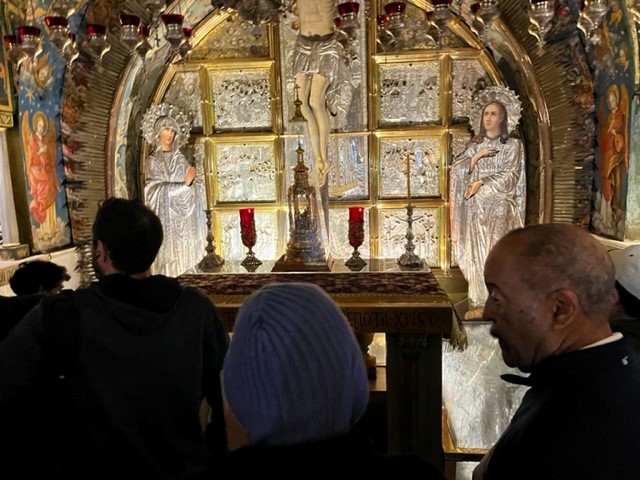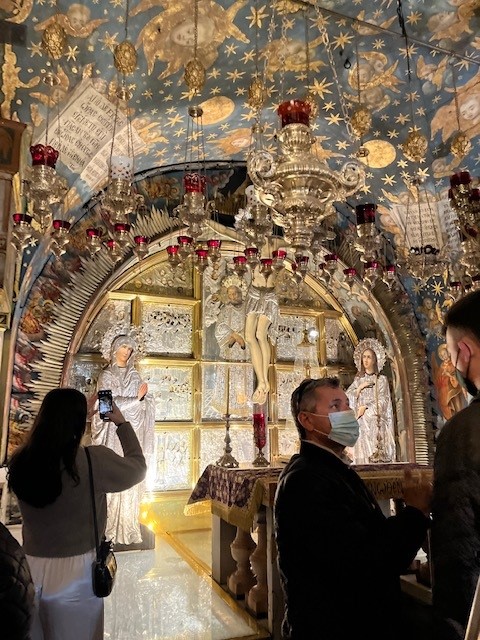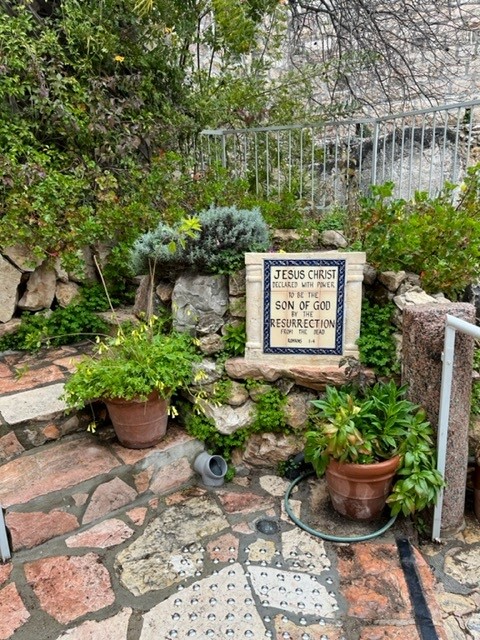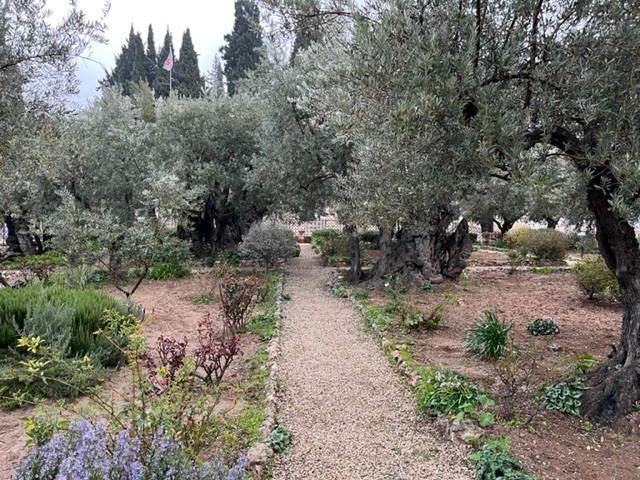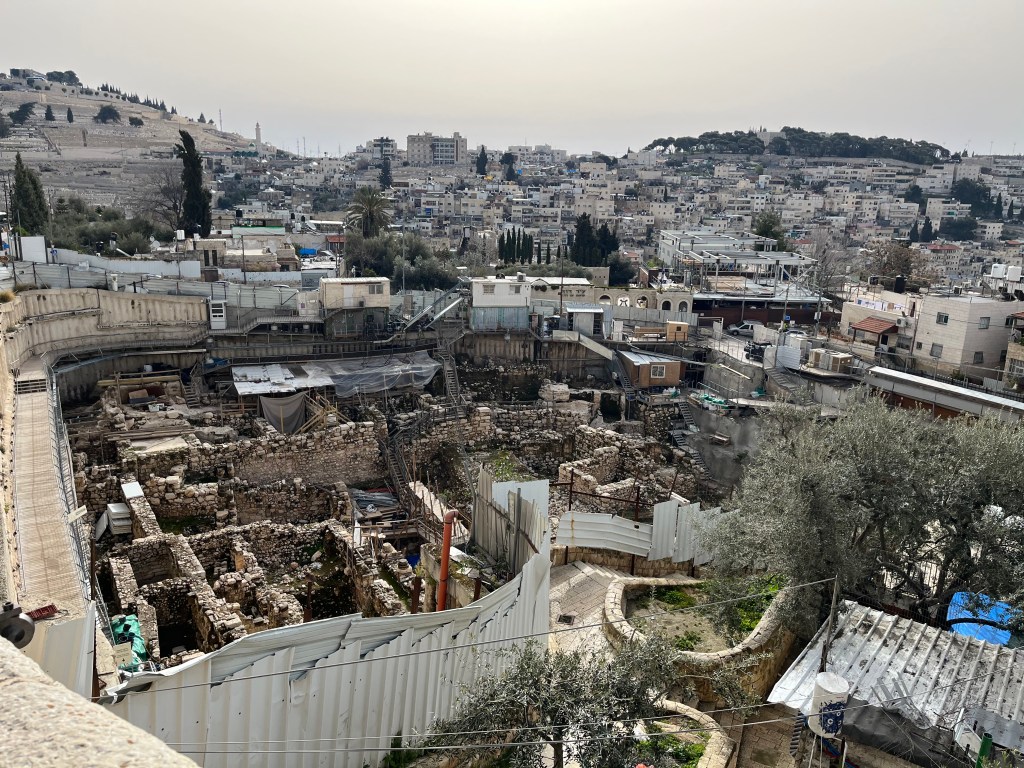The first part of our morning was consumed with the exciting task of getting our pre-flight COVID tests. As much as we had all enjoyed the trip, when our plane lifted off the tarmac that night, we wanted to be sitting on it.
It was the Sabbath, so clinics were closed but we managed to find an Arab non-emergency “hospital” that would take our cash and swab our noses.
We had another full day in front of us beginning with hiking Wadi Qelt–also known as the Jericho trail–a path through the Judean desert between Jerusalem and Jericho that would have been well traveled by many names we recognize in the Bible. David would have fled from Absolom along this road. Mary and Joseph would have traveled it as part of their journey to Bethlehem. And Christ himself would have traversed it and sometimes stopped along the way to teach his disciples.
It was a beautiful, warm day and I should probably be quiet for a moment and let these photos speak for themselves:


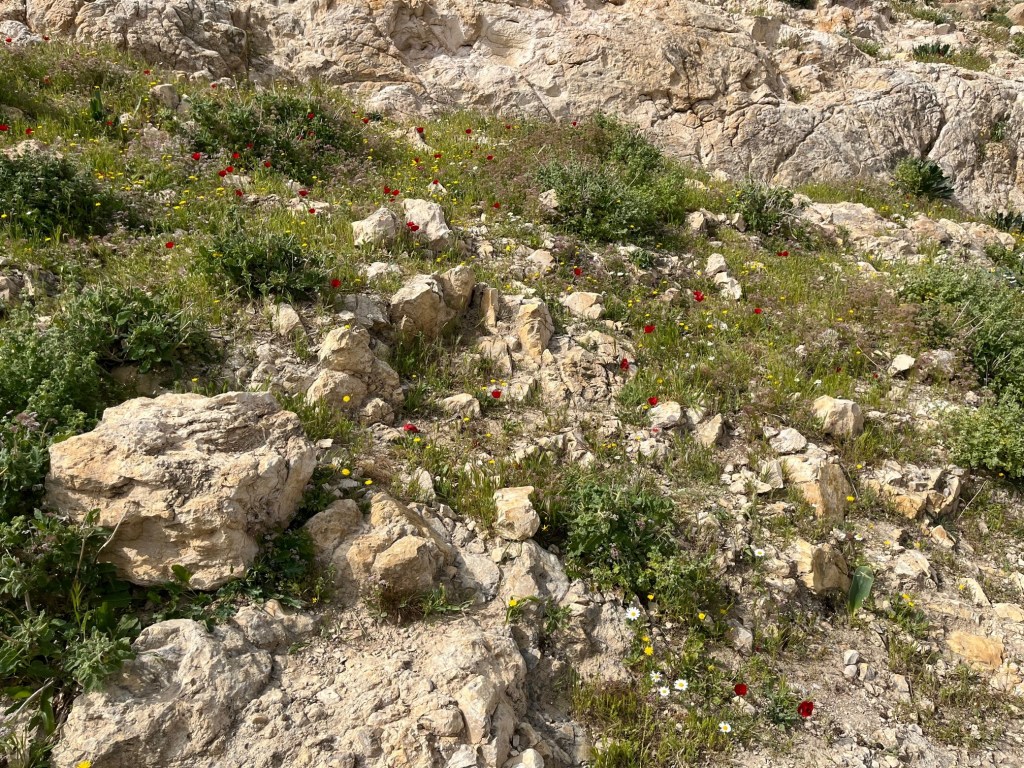
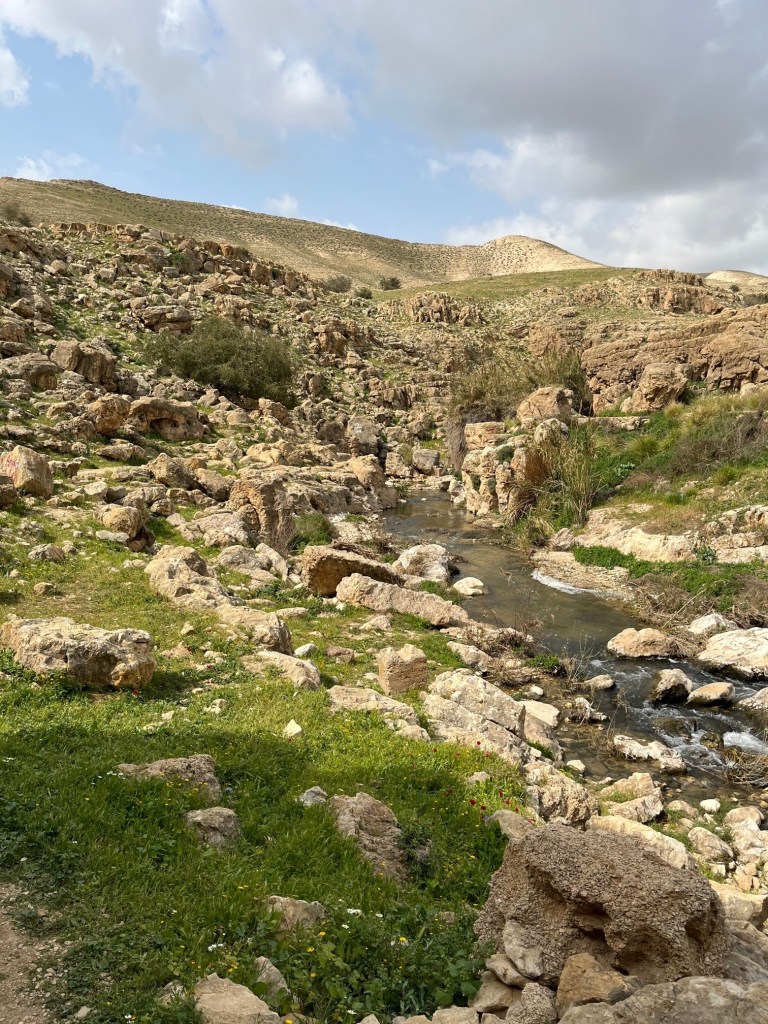


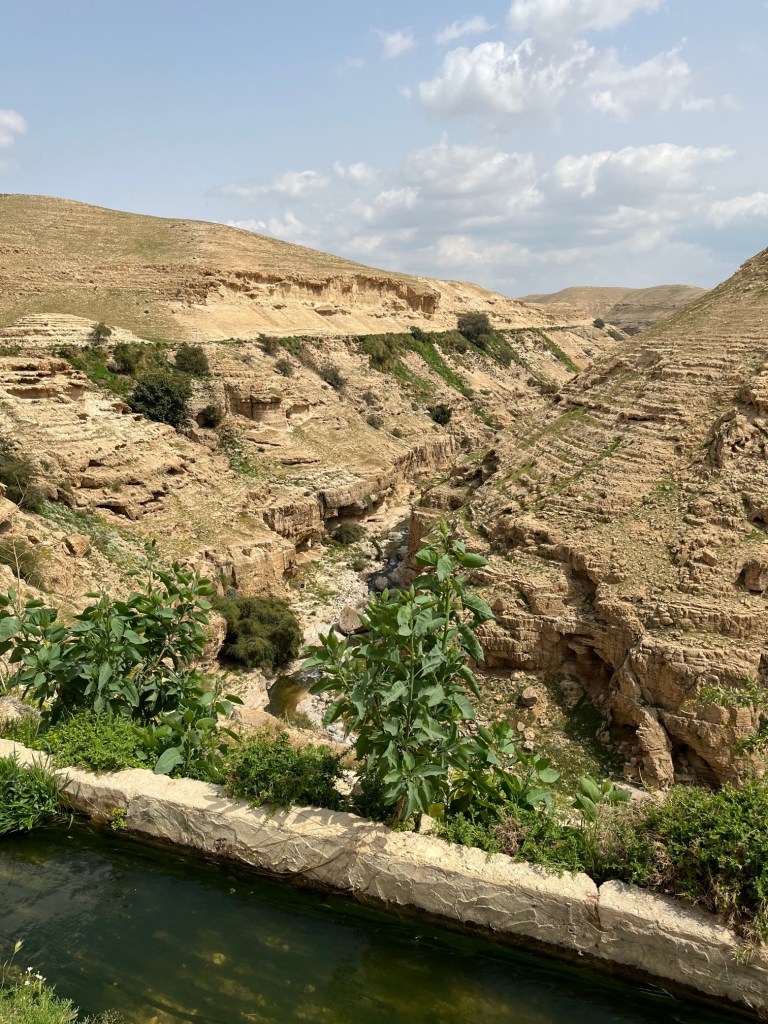


Given the cooler, wetter spring they’ve had in Israel this year, it was much greener than this area would typically be. We saw herds of sheep and goats navigating the rocky mountains and this put a very real spin on the word picture of a shepherd leading his sheep to green pastures and beside still waters.
“The Lord is my shepherd; I shall not want. He maketh me lie down in green pastures. He leads me beside still waters. He restores my soul. He leads me in paths of righteousness for his name sake…” Psalm 23:1-3
Herod, of course, had his fingerprints along this path. An aqueduct he built brings fresh water right through the valley and would have been faithfully filling the swimming pool for his Jericho palace.
We didn’t see any bandits, but that would have been an issue at the time of Christ and perhaps the reason that his famous tale of the Good Samaritan was set along this road. (Luke 10:25-37)
Robbers would not have been the only danger along this path. It had a lot of uneven terrain, a seven mile stretch of scrambling over rocks and up and down inclines…of course, the beautiful views made it absolutely worth every step in March. I don’t believe it would have been enjoyable at all in July or August.
I can’t say I walked the whole way, though…thanks to Abraham and his friendly donkey, Shushu.

After a few minutes on a donkey’s back, I’m convinced once and for all that Mary did NOT ride on a donkey down to Bethlehem. Quite frankly, sitting on a donkey that’s losing it’s footing on the loose rocks on the side of a mountain goes a long way toward making you realize that walking is a great exercise. I’m just saying.

Anyway, it was an awesome way to spend the final morning of our trip and it made the land of the Bible come alive in its own right.

Just as we were reaching our destination, we took a final detour to see what remains of Herod’s winter palace at Jericho. What was once the opulent vacation home of one of the world’s most powerful men is now a pile of ruins surrounded by a few ratty homes and a ton of garbage. Standing in Herod’s Olympic-sized swimming pool made me think of the words of Jesus, “Fear not, little flock, for it is your Father’s good pleasure to give you the kingdom. Sell your possessions, and give to the needy. Provide yourselves with moneybags that do not grow old, with a treasure in the heavens that does not fail, where no thief approaches and no moth destroys. For where your treasure is, there will your heart be also.” (Luke 12:32-34)
Herod’s great power and wealth led to a life of heartache and paranoia. He murdered one of his ten wives and at least three of his own sons; He slaughtered innocent babies; and Josephus tells us that he was so hated by his subjects that he ordered the killing of all the Jewish leaders on his death because that was his only hope that there would be mourning.
What a stark contrast to the simple life and death we had retraced in Jerusalem just the day before. A Jewish contractor with no home, no political status, no fancy swimming pools. His life was not wrenched from Him, it was laid down for all of us. And He changed the world.
His teachings are as counter cultural today as they were two thousand years ago…He is the Good Shepherd asking us to place our simple trust in Him and not where moths and corrupt and thieves break in and steal.

We had one final tourist destination, Qumran. As you know, this was where the Dead Sea scrolls were discovered. Instead of the usual walk through the roped off areas around the digs and watching a move in the museum, we hiked a bit of the cliffs and explored a few caves and tunnels. It was fun. I highly recommend it.
Curtis gave us our final devotional. I’ll be honest and admit I don’t remember it although I’m sure it was good. My brain was just too full at this point. Too many Magnum bars.


We then all ate (okay, almost all ate) an insect in memory of John the Baptist who was likely raised by the Essenes who lived here…I probably shouldn’t tell that detail so it can be a surprise when you come on the next trip. You should. I highly recommend it.

As we headed back toward the van after our second substantial hike of the day and our seventh day of adventure, I noticed that even Jack had stopped taking pictures. When Jack stops taking pictures, you know it’s time to go home.
Thankfully, we were good and tired so we could sleep some on the fourteen hour flight to Miami. The days had gone by quickly but they left a sincere impression I will be slow to forget.
There was a few tense moments at the airport. I guess we looked like a suspicious band of COVID trafficking terrorists. For a moment; it looked like they weren’t going to let us leave. But never mind that story…I have to save something for another day.










